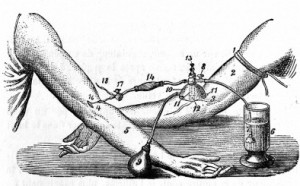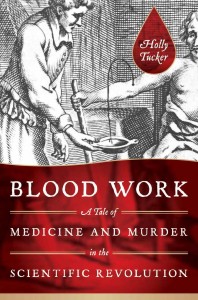By Holly Tucker

A Community for Curious Minds who love History, its Odd Stories, and Good Reads
By Holly Tucker

 Blood Work is a nonfiction murder mystery set in the Scientific Revolution. It centers around the very first blood transfusions, which took place in the late 1660s, a full 150 years before the discovery of anesthesia and antisepsis and nearly 250 years before the discovery of blood types. To make things even more interesting: these first transfusions used animals as donors.
Blood Work is a nonfiction murder mystery set in the Scientific Revolution. It centers around the very first blood transfusions, which took place in the late 1660s, a full 150 years before the discovery of anesthesia and antisepsis and nearly 250 years before the discovery of blood types. To make things even more interesting: these first transfusions used animals as donors. 